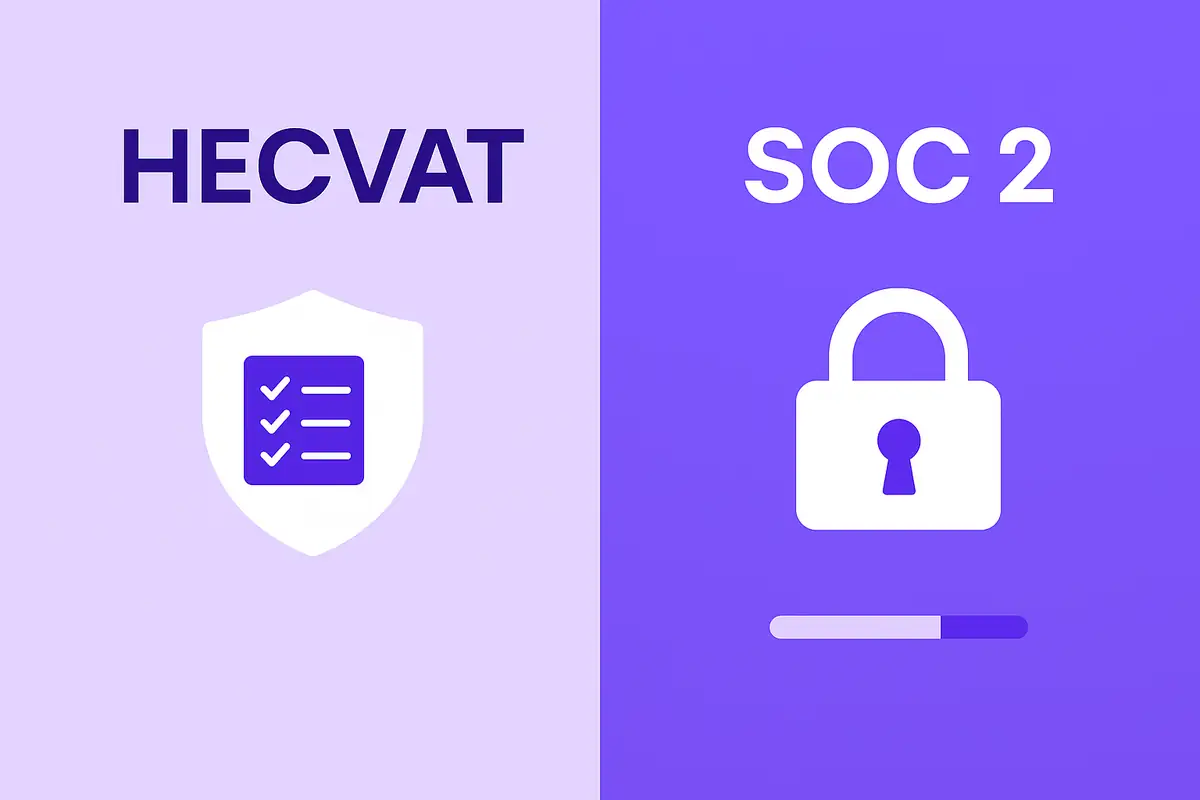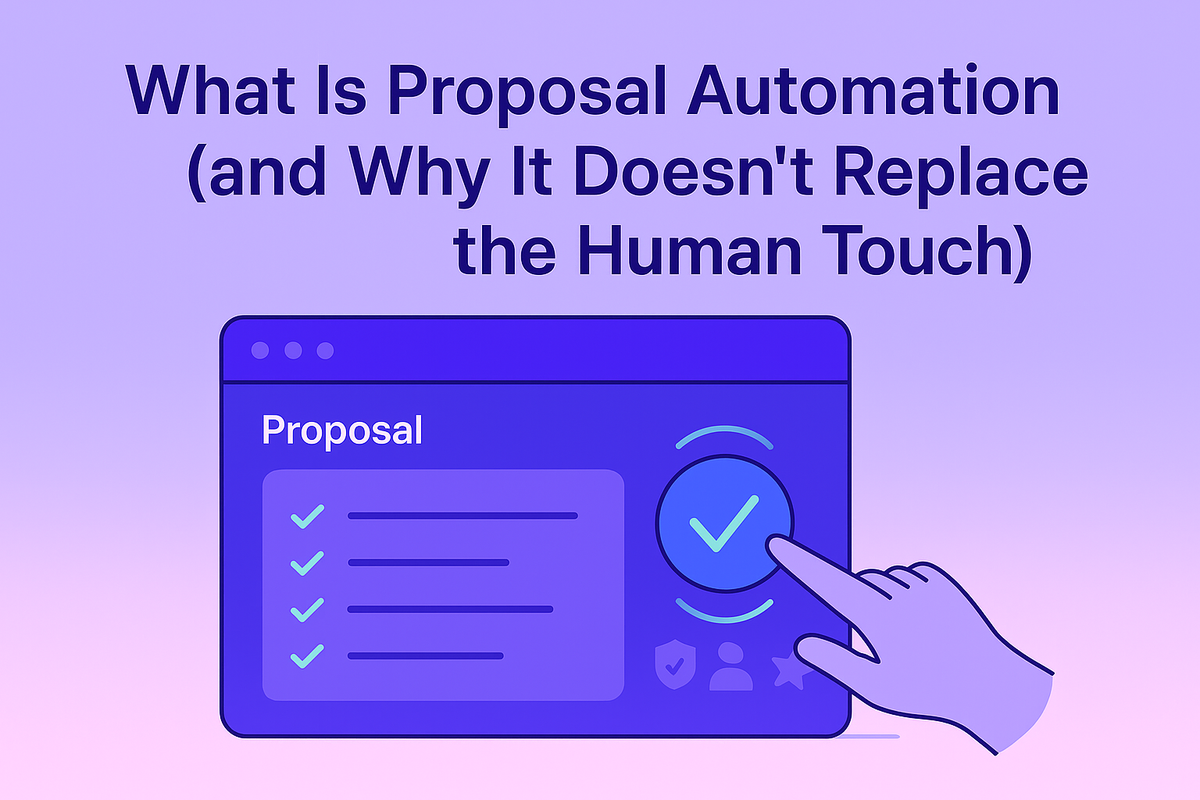HECVAT vs SOC 2: Key Differences Explained
September 10, 2023
By
Evie Secilmis

Selling to Colleges & Universities and asked to complete a HECVAT?
In the realm of cybersecurity, the standardization of assessment tools is vital. Those familiar with the AICPA's SOC2 (System and Organization Controls 2) will recognize its widespread applicability in various industries.
However, for those selling to Colleges & Universities, there's another tool tailored for higher education: the HECVAT (Higher Education Community Vendor Assessment Toolkit). This framework aligns closely with the world of vendor due diligence and security questionnaire automation.
Background: EDUCAUSE and its Mission
To grasp the origin of HECVAT, one must explore EDUCAUSE – the organization behind it. EDUCAUSE stands as the most extensive community of Chief Information Officers and other technology professionals that serve at Colleges & Universities.
This nonprofit association aims to propel higher education through the utilization of information technology. Recognizing the need for an assessment tool tailored to the unique challenges faced by these institutions, they spearheaded the development of HECVAT.
HECVAT vs. SOC2: A Comparative Analysis
While SOC2 offers a broad-based assessment relevant across a range of industries, HECVAT delves into the specific intricacies of higher education. It considers the unique threats, regulations, and nuances inherent to the academic environment — including FERPA, HIPAA, and decentralized IT environments.
For more about SOC 2 in vendor workflows, see the Iris glossary on SOC 2.
Transitioning from SOC2 to HECVAT
For professionals acquainted with SOC2, navigating HECVAT might appear challenging. However, both share similarities in their systematic approach.
Acquaint Yourself with Higher Education Challenges
Delve into the specific data privacy mandates, user demographics, and infrastructure peculiarities of educational establishments.
Build on SOC2 Expertise
The foundational cybersecurity knowledge gleaned from SOC2 remains pertinent. Notions surrounding data integrity, access governance, and incident management, to name a few, are still relevant — similar to how teams build repeatable answers in Iris.
Engage Thoroughly with HECVAT
Immerse in the toolkit's exhaustive modules. HECVAT presents a clear pathway, ensuring vendors resonate with the IT benchmarks established by higher education entities.
Connect and Participate
Engage with the dynamic community enveloping EDUCAUSE and HECVAT. Exchanging experiences, hurdles, and best practices with counterparts can furnish invaluable perspectives — much like cross-team workflow collaboration in structured response environments powered by AI, such as Iris AI.
Final Thoughts
For cybersecurity professionals in the higher education sector, the HECVAT isn't just another toolkit; it's a specialized asset designed for precision.
By combining the foundational knowledge from SOC2 with HECVAT’s detailed framework, institutions can achieve a robust security posture tailored to their unique needs. Whether you're a seasoned SOC2 professional or new to the field, embracing HECVAT can significantly bolster higher education’s cyber defenses — similar to how automation accelerates responses across RFPs and questionnaires in our platform overview.
To learn more about the HECVAT and complete one automatically, schedule time with our team.
HECVAT vs SOC 2 FAQ
What is the main difference between SOC 2 and HECVAT?
SOC 2 is a broad, industry-agnostic compliance framework created by the AICPA, while HECVAT is specifically designed for higher education institutions, addressing their unique risks, regulations, and IT environments. SOC 2 evidence is valuable, but higher-ed requires a more tailored assessment — similar to completing a detailed security questionnaire.
Why do Colleges & Universities prefer the HECVAT?
Higher education faces challenges such as decentralized IT, student data privacy (FERPA), and research compliance. The HECVAT was built to evaluate these areas in greater depth than general frameworks like SOC 2 — much like how an institution may ask for vendor-specific diligence similar to a SOC 2 review.
If I already have a SOC 2 report, do I still need a HECVAT?
Yes. A SOC 2 report helps demonstrate strong security controls, but most universities still require a HECVAT because it directly maps to the EDUCAUSE framework and covers education-specific risks. The overlap is helpful, and teams often reuse policy language as they would during security questionnaire automation.
How long does it take to complete a HECVAT?
Depending on preparation, vendors usually spend anywhere from a few days to two weeks. Having structured security documentation, SOC 2 evidence, and prior questionnaire responses ready significantly speeds up the process — especially when managed in a centralized platform like Iris to avoid manual rework.
Who created the HECVAT and why?
The HECVAT was created by EDUCAUSE, the largest community of IT leaders in higher education. They recognized the need for a standardized assessment to help institutions evaluate vendors consistently and improve cybersecurity across the sector — similar in intent to the standardization behind security questionnaires in the broader enterprise market.
Related Articles
Share this post
Link copied!




















